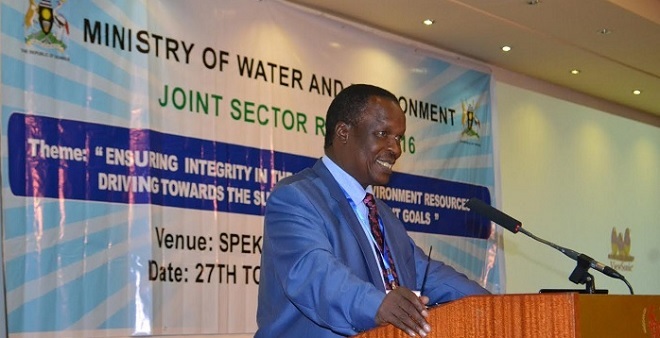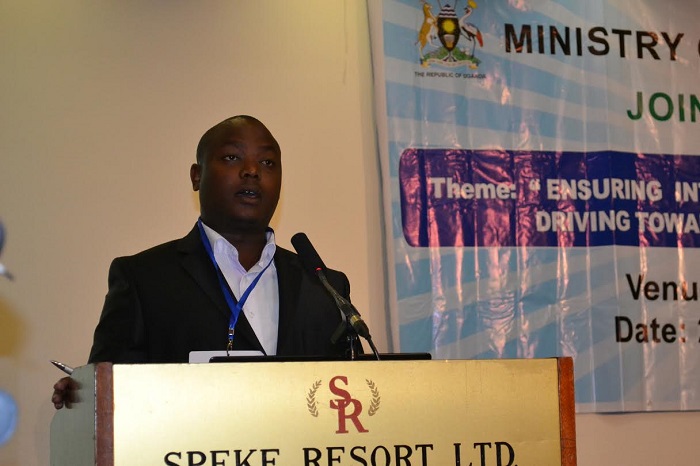
In what ways will rapid population growth affect the NRM Government’s vision of making Uganda a middle income country by 2020?
This was the question that saw two ministers disagree during the annual Water and Environment Joint Sector Review going on at Speke Resort Munyonyo September 27-29 . Minister of Water and Environment Sam Cheptoris and Minister of State for Water, Ronald Kibuule, were both speaking at the opening session of the sector review.
“I don’t think that population growth will affect the achievement of middle income status by 2020,” Kibuule said, adding that he promotes population growth and contributes to it. “But we are not the problem to Uganda’s attainment of middle income status. Environment and water can be protected by all of us,” he said.
Cheptoris, who was speaking on behalf of the Prime Minister Ruhakana Rugunda, disagreed with Kibuule saying, “We must discourage high population growth.”
Water and Environment sector experts often cite high population growth as one of the factors contributing to environmental degradation as it heightens the demand for natural resources. High population growth also affects access to water and sanitation services as it outstrips investment in facilities, resulting in increased crowding and pressure on facilities.
Uganda’s population growth is estimated at 3.4% per annum.

However both ministers agreed that there are many other challenges that are preventing the water and environment sector from achieving its targets as defined in the national development plan. They include degradation of the environment and natural resources; pollution of water resources; encroachment on wetlands; deforestation; effects of climate change; climate variability and poor maintenance of water supply facilities.
Minister Cheptoris laid emphasis on the challenge of climate change, which he said was already affecting the major drivers of the economic growth especially water resources.
“Uganda needs to effectively manage the effects of climate change. One of the serious problems we are facing is degradation of environment,” Cheptoris said, adding that a healthy clean environment is essential for boosting wealth creation and sustainable development.
Kibuule stressed that key challenge preventing the water and environment sector from attaining its targets is limited funding. He specifically called for funding to increase from the current 3% to 10% of the national budget.
Both ministers reiterated government’s commitment to improve the performance of the water and environment sector as it is strategic to national development.
Cheptoris’ middle income status plan
Minister of Water and Environment Cheptoris recently issued sector guidelines, strategies and targets for the attainment of middle income status by 2020.
Key among the proposals are increase access to clean and safe water from the current 65% to 79 % in rural areas within a radius of one kilometre with the aim of providing a water source in every village.
Other targets are to increase access to clean and safe water from the current 77% to 100 % in urban areas by increasing piped water coverage in both small and big towns and promote Integrated Water Resources Management (IWRM) in all development activities for sustainable water resources country-wide.
Improve access to Water for Production and increase cumulative storage from the current 38.4 million cubic metres to 150 million cubic metres to support multiple uses like irrigation, livestock, aquaculture and rural industries.
Increase the country’s forest cover from 10% to 18% through massive tree planting of 100-200 million trees annually country wide and wetlands cover from 10.9% to 12% through restoration and demarcation of wetlands.
Increase automation of climate monitoring network from 10 percent to 40 percent and integrate climate change policy interventions in all sector development plans.
 The Independent Uganda: You get the Truth we Pay the Price
The Independent Uganda: You get the Truth we Pay the Price



